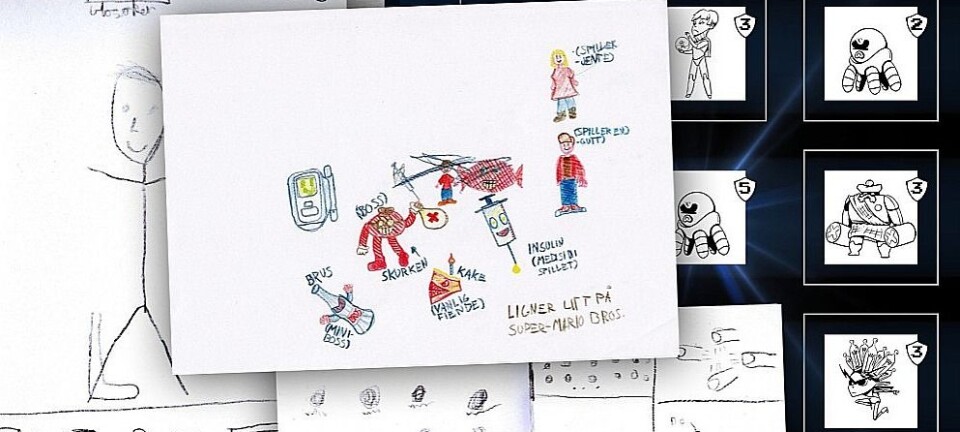This article was produced and financed by Norwegian centre for E-health research - read more

Acute psychiatric help via video conference
The psychiatrist in Tromsø can talk to the patient as well as health professionals, even if the specialist is miles away.
Acute mental illness can hit wherever you live or what day it is. A psychiatrist is not always available there and then.
Research shows that the use of video conferencing between psychiatrist, patient and health personnel can contribute to a more patient-centered emergency psychiatric service.
By using video conference, the patient can get quick help and also become more involved in their own treatment, says Marianne Trondsen, senior researcher at the Norwegian Centre for E-health Research.
Long distances

Trondsen led the research project Videocare, where they wanted to investigate experiences with the use of video conferencing in acute psychiatry in parts of the University Hospital of Northern Norway’s area.
The hospital covers large areas and strives to get enough professionals elsewhere than in Tromsø. Three district psychiatric centers in Troms and Ofoten participated. Six psychiatrists participated in a 24/7 on-call service.
When healthcare personnel at the centers needed rapid contact with a psychiatrist for patient evaluation or treatment questions, the psychiatrist was called or connected to a video conference for consultation with the patient.
Thus, the patient could be assessed 24 hours a day in an emergency situation, even when there was no psychiatrist physically present.
"It gives a more accessible acute psychiatric service, also afternoons, nights and weekends," says Trondsen.
Be seen and heard
The study shows that video conferencing was perceived as useful for team building and co-operation around the patient, even though the health personnel are not gathered in one place.
Local health personnel and the psychiatrist chose to consult via video in case of uncertainty about the treatment or severity, if it would strengthen the alliance with the patient or by disagreements.
Then the psychiatrist connected on video and together they agreed on what to do. Everything while the patient could participate in the conversation. This also had a symbolic dimension. When the patient was part of the video communication, decisions were not taken without the patient being involved.
Now everyone could see and hear what was said and participate in the conversation.
"For patients it was important to be able to describe how they felt, and participate in decisions about their own health. They were taken seriously, and it gave a feeling of security in a situation that can be perceived as unclear," Trondsen points out and adds:
"Being allowed to describe their own situation to the person who makes the decision also has something to do with dignity. If the patient assessment is made by telephone by the health care professional and the psychiatrist, without the patient, it gives less opportunity to get involved in decisions that concern you."
When everyone is present in a video conference, it becomes more transparent what is said, evaluated and decided. In this way, video conferencing contributes to a more patient-centered health service, where the patient is in focus and contributes to decisions.
"It's also about developing services for tomorrow's patients who are used to communicating via screen," says Trondsen.
More professionals, more security
Video conferencing was also useful for the clinical aspect. When the psychiatrist can see and talk to the patient, he can make a more thorough clinical decision.
It provides peace of mind both to the doctor, the local health care professional and the patient and simplifies the collaboration despite distance.
It also provided security for everyone to be able to use video conferencing for consideration when, for example, there was uncertainty or different views on treatment or severity.
"It is good to get more opinions when deciding on treatment. In one example, video conferencing was used as the patient wanted to be discharged earlier than the therapists believed was best. Through dialogue between the psychiatrist, therapists locally and the patient, they agreed on further treatment."
Safety net
"The participants found that in simple cases it is not always appropriate to use video conference, and the patient may also be too sick or tired. Participating in video conferencing is also voluntary for the patient. So it was in the more challenging cases they chose to use it," says Trondsen.
Just knowing that the psychiatrist was only a screen away, provided security for everyone. Also when it was not used.
"Videoconferencing served as a safety net. The health personnel locally were more assured when they knew that if needed, they could contact the psychiatrist. They could, for example, contact the on-call specialist at night or weekends when staffing was lower," says Trondsen and elaborates:
"Without the possibility of a video conference with a psychiatrist for direct patient assessments, one would have to send the patient far to be considered by a psychiatrist in Tromsø. This simply creates a better emergency service locally. The experience with video conferencing was positive both for healthcare professionals, psychiatrists and patients, although it does not necessarily suit everyone. At the same time it was useful for more people than expected. And while some were too ill to express themselves, the doctor could observe and evaluate the body language via video and make a decision quickly."


































